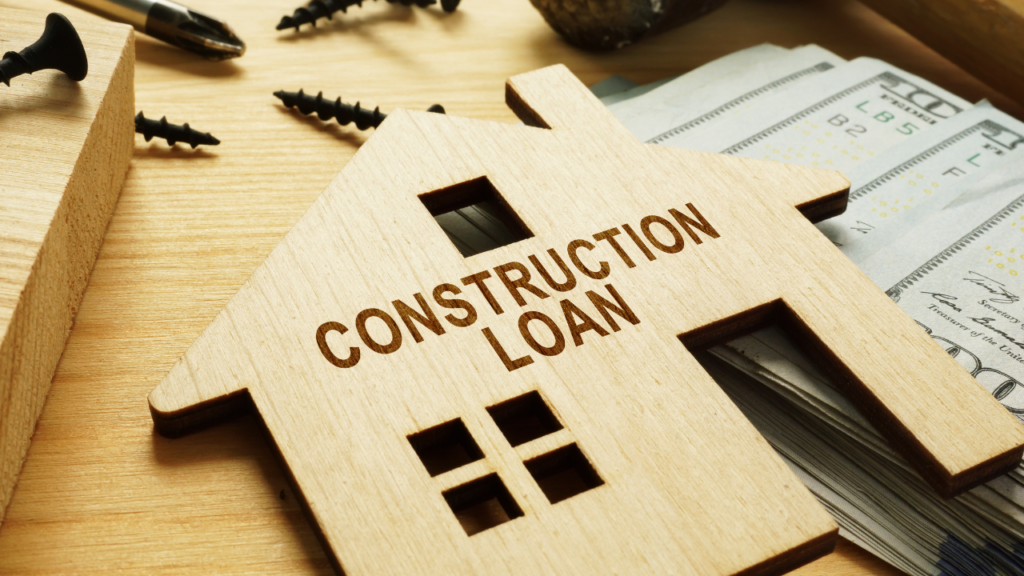A construction loan is a short-term, specialized financing option used to fund the construction of a new home or significant renovation project. Unlike traditional mortgage loans, which are typically used to purchase existing properties, construction loans cover the costs of building a house from the ground up. This type of loan offers flexibility but also comes with unique requirements and risks, which makes understanding its nuances crucial for anyone considering building their dream home.
What is a Construction Loan?
A construction loan is designed to cover the costs associated with building a home, including materials, labor, permits, and land preparation. The loan duration typically lasts for the construction period, which is usually between 6 to 18 months. Once the construction is complete, the borrower either pays off the loan in full or refinances it into a conventional mortgage, often called a “construction-to-permanent” loan. You can also contact this website to find the best construction loan.
Types of Construction Loans
- Construction-to-Permanent Loan: This type of loan starts as a construction loan and then transitions into a permanent mortgage once construction is complete. The key benefit is that it requires only one closing, saving you time and additional fees. During construction, you only pay interest, and once completed, the loan converts to a regular mortgage with monthly payments for principal and interest.
- Stand-Alone Construction Loan: Also known as a “two-time close” loan, this option involves two separate loans—one for the construction phase and another to refinance into a permanent mortgage once construction is finished. While this may provide more flexibility, it requires two separate closings, resulting in higher overall closing costs.
- Owner-Builder Construction Loan: For borrowers who wish to act as their own general contractor, this loan provides funds to manage the construction process themselves. Lenders may be hesitant to approve such loans unless the borrower has proven experience and expertise in construction management, as the risk is higher compared to hiring a licensed builder.
How Construction Loans Work
Construction loans differ significantly from conventional loans because they are not issued as a lump sum. Instead, the lender disburses funds in stages as the construction progresses. These stages are known as “draws,” and each draw corresponds to a specific phase of the building process, such as laying the foundation, framing, and installing the roof. Before releasing the funds for each stage, the lender often requires an inspection to ensure the work is completed according to the plans and budget.
During the construction phase, borrowers typically make interest-only payments on the loan, and the interest rate is usually variable. Because of the short-term nature and added risk for lenders, construction loans tend to have higher interest rates compared to conventional mortgages.
Requirements for a Construction Loan
Securing a construction loan involves more stringent requirements than a traditional mortgage, as lenders need to ensure that the project is feasible and that the borrower can manage the additional risk. Here are some of the key requirements:
- Detailed Construction Plan: Borrowers must provide a well-defined construction plan that includes building specifications, a timeline, and a budget. Lenders also require a contract with a licensed builder who is responsible for completing the work.
- Down Payment: Construction loans usually require a higher down payment, often ranging from 20% to 30% of the total cost. This is because the risk for the lender is higher, as the home is not yet built.
- Strong Credit Score: A good credit score is crucial for securing a construction loan, as lenders want to ensure the borrower can handle the responsibility of such a complex project. Generally, a credit score of 680 or higher is preferred.
- Income and Debt Verification: Lenders will also evaluate the borrower’s income and existing debt to determine their ability to handle monthly payments during the construction phase and after converting to a permanent mortgage.
Benefits and Risks of Construction Loans
One of the main benefits of a construction loan is the flexibility it provides. Borrowers can finance the construction of a custom home tailored to their needs and preferences. Moreover, construction loans can also cover the cost of land, providing a comprehensive solution for individuals looking to build a home from scratch.
However, there are also risks involved. Construction projects can face delays, cost overruns, or unexpected complications, which may lead to higher expenses. Additionally, the variable interest rate during the construction phase may increase, resulting in higher payments than anticipated.
Conclusion
A construction loan is an essential tool for anyone looking to build a new home or take on a major renovation. Understanding the different types of construction loans, the requirements involved, and the potential benefits and risks can help you make informed decisions throughout the building process. Working with an experienced lender and builder is key to ensuring the success of your project and turning your vision into reality.
